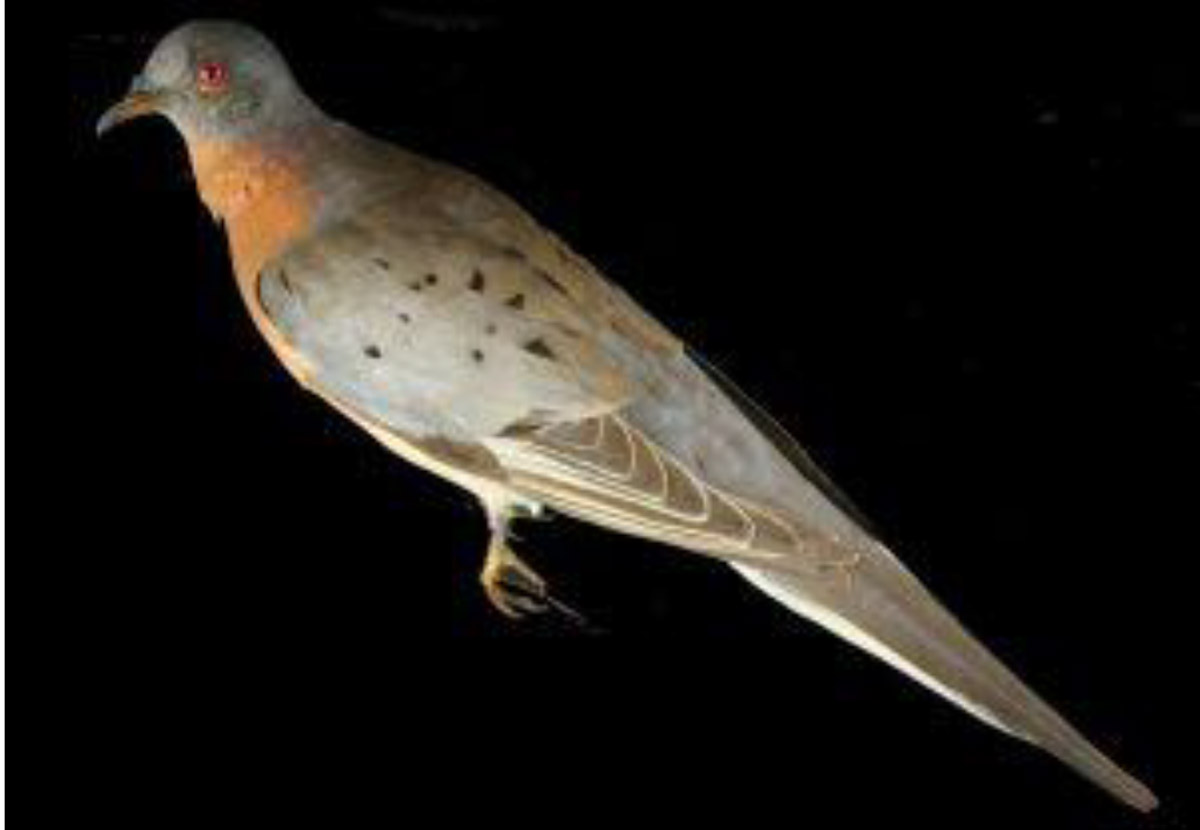Passenger Pigeon (taxidermy)
"From abundant to zero"1898 extinct passenger pigeon (taxidermy) - from Winnipegosis (1 of 5 in Manitoba Museums)
 Passenger Pigeon (taxidermy)
Passenger Pigeon (taxidermy)
Story
The Passenger Pigeon once numbered in the billions and was thought to be the most abundant bird in all of North America. The bird was so plentiful there are stories of flocks of pigeons darkening the sky for hours at a time. This bird was also a common food source for many groups of indigenous people and early settlers.
During the 1800s, as more settlers arrived in North America, hunting of the species increased. The pigeons flew in such large flocks even inexperienced hunters could bring down large numbers. At the same time many of the forests in Eastern North America that the birds relied on for food started to be cut down for agricultural land. The advancement of the railways also allowed a more commercial hunt to be developed. Due to over-hunting and habitat loss the passenger pigeon went from billions to zero and was extinct by the early 1900s.
The passenger pigeon came to Canada in the summer and was often found nesting from the East coast west to Saskatchewan and probably parts of Alberta. This beautiful passenger pigeon specimen was found in Winnipegosis, Manitoba in 1898, one of the last collected in Canada.